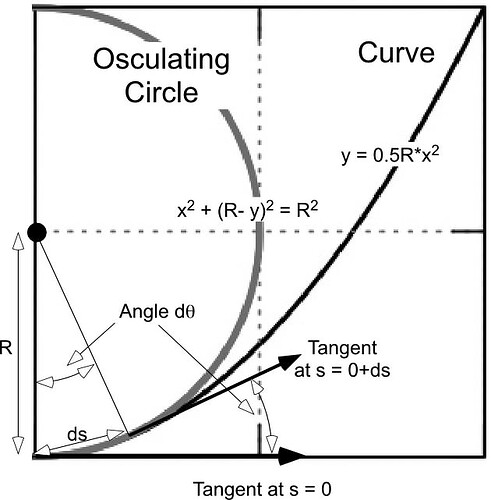[From Rick Marken (2016.09.03.1455)]
RM: Actually it was my wife and I who had dinner with Gary Cziko and his lovely wife. But after dinner Gary and I broke away to have our own “Dinner with Andre” discussion because it turns out Gary has been monitoring the power law discussion on CSGNet (he said he even posted some comments on it but I haven’t seen any; has anyone else?) and he asked some very challenging questions about my analysis, which I am still mulling. But the most important thing I learned from our discussion was that as radius of curvature, R, increases, curvature decreases! So now I know why everyone keeps saying that the power law shows that movement slows down through curves. The power law says that as R increases tangential velocity, V, increases. But since an increase in R is actually a decrease in curvature, the power law means that as curvature decreases velocity increases (or, conversely, velocity decreases as curvature increases, just as everyone says).
RM: [There is still a problem for me with the fact that the power relationship between curvature, measured as C (1/R), and angular velocity, measured as A (V/R), still seems to show an increase in velocity (A) with curvature © since larger values of C now mean greater curvature and larger values of A mean greater speed around a curve). But one thing at a time for me (Gary can apparently handle many things at a time, being as he is, an incredible polymath – multi-instrument musician, multi-sport sportsman, multi-language linguist, multi -book writer and multi-grandchild grandfather ; ironically the only thing he stinks at is math;-)
RM: Just to check things out, when I got home I used my spreadsheet to create ellipses where the velocity of movement was fast through the most curved part of the ellipse and slow through the least curved part. I used an ellipse because when I create elliptical movement in the usual way – by plotting a sine and cosine wave of different amplitude against each other – I get an estimate of the power coefficient relating R to V of exactly .33 with an R^2 of 1.0. When I speed up movement through the curve the power coefficient relating R to V is -.71, which is consistent with the fact that speed was increased through the curves. But the R^2 for the fit of this power law was only .05!! When the D variable (what Richard Kennaway described as “the magnitude of the cross product of V =
(Xdot,Ydot) and the acceleration Vdot = (Xdotdot,Ydotdot)” ) was included in the analysis, the power coefficient of R was .33 and R^2 was 1.0.
RM: Since it is perfectly possible for people to move fast through tight curves and more slowly through gradual curves, this little experiment shows that it is mathematical properties of the movement itself and not how the movement was produced that determines whether or not the movement is fit by a power law – and what the coefficient of the power law will be. What seems to determine the fit of the power law to any movement depends on how the aspect of that movement that is measured as D – the cross product of velocity and acceleration – varies throughout the movement. But now my aim is to demonstrate that this is true with real movement data and figure out what it is about movements that leads to variations in the cross product (D) that affect the fit of the power law to the data.
Best regards
Rick
···
Richard S. Marken
“The childhood of the human race is far from over. We
have a long way to go before most people will understand that what they do for
others is just as important to their well-being as what they do for
themselves.” – William T. Powers

